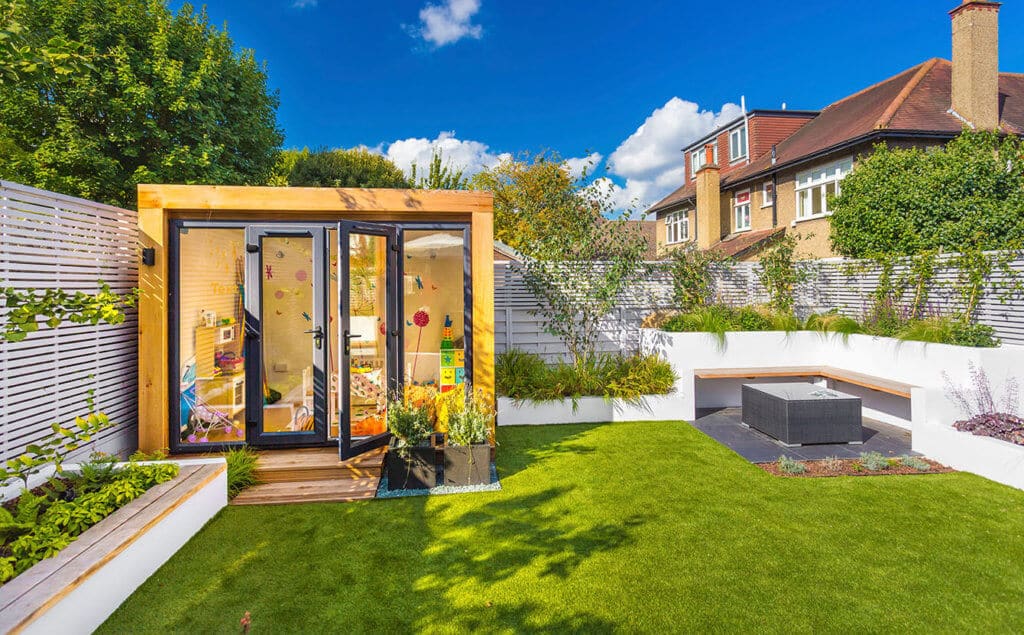Great Ideas On Planning Permission For Garden Summer Houses
Great Ideas On Planning Permission For Garden Summer Houses
Blog Article
What Type Of Planning Approval Do You Require To Construct The Garden Like, For Instance, In Order To Address Highway Issues?
When you think about the construction of gardens, conservatories, and outhouses, along with extensions or gardens offices, traffic concerns are a factor that may affect whether you need planning permission. These are the most important factors to consider: Visibility and Sight Lines
The planning authority has to approve the building if it obstructs the view of motorists as they leave or enter the building, or its construction alters sight lines on junctions or bends. The planning authorities will evaluate whether or not the construction creates a risk to road safety.
Proximity to the highway:
Planning permission is normally required for structures built near highways, such as extensions or front gardens. In order to ensure that the structure doesn't interfere with highway safety there are distance rules.
Access and Egress
It is probable that the planning permit will be needed for changes to the existing access points or to create new ones. This is necessary to ensure that the entry and exit points are safe for traffic and don't create any disruptions.
Parking Arrangement:
Planning permission is required if the new structure requires additional parking or has a negative impact on existing parking. The planning authority will determine whether the development has enough parking spaces or doesn't create congestion on streets.
Traffic Generation
Planning approval is required for development that generate additional traffic, such as garden offices where customers visit. The assessment will focus on the effects on traffic flow and security.
Impact on Pedestrian Access:
Planning permission is needed if the proposed structure is a threat to pavements or pedestrian paths. Insuring pedestrian access is not obstructed and remains safe is a key factor.
Impact of Construction on Highways
The impact of construction activities on roads, such as the movement of large vehicles and temporary obstructions, may require planning permission. The planning authority may set conditions on construction in order to reduce disruption to roads.
Drainage and runoff from water
Another aspect to consider is the development's effect on drainage and water runoff. Planning approval ensures that the proposed structure will not exacerbate any drainage or flooding issues that could negatively impact the highway.
Street Furniture and Utilities
A permit for planning is required for any construction that will impact street furniture, such as lampposts, signs or underground utilities like electric cables and water pipes. The planning authority will work closely with the relevant agencies to address any concerns.
Highway Authority Guidelines
Local highway authorities might have rules and regulations specific to development near highways. Planning permits assure that regulations are adhered to to ensure road safety.
Noise and disturbances caused by traffic
The new structure might cause more noise or traffic (e.g. an office that is located in the garden and receives visitors and deliveries). Planning permission will be needed to mitigate any adverse effects.
Accessibility to Public Transport:
Planning permission is required if the development could affect public transport infrastructure, like bus stops and train stations. Impact on public transport users as well as integration with the transport system will be taken into consideration.
In summary, highways concerns are a major factor in obtaining permissions to plan for gardens and conservatories. In order to avoid any negative impact on pedestrian accessibility, traffic, road safety or overall infrastructure, it is vital that the design proposed not affect these factors. Talking with the local planning authority as well as the highway authority at the beginning of the process of planning can assist in addressing these issues and ensure compliance with all relevant laws. See the most popular garden offices hertfordshire for more advice including garden room permitted development, garden rooms near me, garden outhouses, garden room heater, how to lay decking on soil, garden rooms in St Albans, garden outhouse, garden room permitted development, garden room conservatory, garden outhouses and more.
What Is The Neighbourhood Plan Permission For Garden Rooms, And So On.?
The neighbor's concerns could be a significant element in determining whether planning permission will be needed to construct a garden room or conservatory, an outhouse, garden office, or extension. Here are the most important factors to take into consideration overlooking and privacy:
A planning permit is required if a new building might result in a loss of privacy because it overlooks adjacent properties. This is to ensure that the new building doesn't adversely impact the living conditions of the residents living nearby.
Light loss and shadowing
Planning permission is typically required in cases where the proposed construction could result in overshadowing or a substantial loss of light to neighboring properties. The local planning authority evaluates the impact of sunlight on nearby homes.
Noise and Disturbance
The planning permission is necessary if the garden or an extension is being used for noise-generating activities (such as clients visiting your home office as well as a music studio a work shop, etc.). This will ensure that the noise levels are acceptable and do not disturb the neighborhood.
Visual Impact and Character
The new structure's design, size and appearance must match the character of its neighborhood. Planning permission is required in order to make sure that the new construction is attractive and doesn't compromise the appearance of the neighborhood.
Boundary Proximity:
Constructions located within two metres of a boundary, or structures higher than 2.5 metres could require approval for planning. This is to handle potential disputes, and also to protect neighboring properties.
Shared Access Rights and Rights of Way
If the construction is affecting rights of access or shared access points, planning permission is necessary to ensure that these aren't obstructed or affected.
Rejections from neighbors:
Planning applications are discussed with neighbors. Planning authorities take into consideration the opinions of neighbors in deciding whether to approve the application.
Impact on Property Values:
Planning permission is often needed when major changes to the value of homes around you occur. This may not be the primary factor, but it can still influence the decision. Local authorities will take into account the effect on property values of these modifications when making their decisions.
Covenants and Deed Restrictions
There could be covenants, deed restrictions or other legal agreements related to the property. They may have to be adhered to regardless of planning permission. Legal agreements could dictate what is and is not allowed to be built. This can affect neighborhood harmony.
Construction Disturbance:
Planning permission may deal with concerns about disturbances that may occur during construction, including dust, noise and traffic. Conditions may be imposed in order to reduce the impact on neighbours.
Impact of Infrastructure
If the structure is causing an additional burden on the local infrastructure (e.g. drainage, parking, road usage) Planning permission will ensure that these effects are evaluated and managed appropriately.
Consultation of the Community
In some instances, a more extensive community-based consultation may be necessary particularly when it comes to larger or controversial projects. This permits more democratic decision making taking into account the views of the local community.
In the end, neighborhood concerns play an important role in the process of obtaining planning permission for conservatories and garden rooms. It is essential to make sure that the project will not adversely impact on the quality of life in the neighborhood and privacy as well as sound, light or the overall appearance. Consult with the local planning authority and involving neighbors earlier in the planning process can help address these concerns and ease the approval process. Have a look at the recommended garden room with heating for site advice including what size garden room without planning permission, Tring garden rooms, garden out house, conservatories and garden rooms, what size garden room without planning permission, costco garden room, garden buildings , garden room permitted development, composite garden office, outhouse for garden and more.
What Planning Permission Are You Required To Obtain For Garden Rooms Etc In Terms Of Location Restrictions?
The location restrictions are essential when planning to construct gardens offices, conservatories or outhouses. Here are the major elements to take into consideration when planning a location The proximity of boundaries
If the building is situated within two meters of the boundary line, it must not have a maximum height over 2.5 meters. If the building's height exceeds the limit, planning permission is required.
Front of the Property:
The permit for development does not usually allow for extensions or forward-facing buildings.
Front of the Property
Side extensions must be in line with specific size and height restrictions and often require planning permission if they extend beyond the existing side wall of the home.
Rear of the Property:
The size and height of rear extensions as well as garden rooms at the rear of the house is limited. If these exceed allowed limits for development Planning permission is necessary.
Designated Areas
In National Parks, World Heritage Sites and Areas of Outstanding Natural Beauty there are more stringent regulations. Planning permission can be required for new structures of any size.
Built in listed buildings:
Buildings listed on the list are subject to stringent guidelines. Planning permission as well as listed-building consent are usually required to build an entirely new structure or alter the existing structure, regardless of the location within the property.
Green Belt Land:
In order to maintain open areas, it is very difficult to build on greenbelts. The majority of times the construction or alteration that is significant requires a permit.
Zones of risk for flooding:
In the event that the property is situated in an area at risk of flooding it is necessary to follow additional regulations to ensure that the proposed construction doesn't increase the risk. It may be necessary to get planning permission or a flood assessment.
Urban vs. Rural Settings:
Urban and rural areas are often governed differently. Rural homes, for instance are likely to have more flexible limitations on the location and size of outbuildings. But, this may vary widely.
Highways and Public Rights of Way
If the structure is close to highways, roads, or public rights of way, planning permission could be required to ensure that the structure does not obstruct views or access or cause harm to others.
Shared ownership or leasehold of land:
If the property is leasehold or part of a shared ownership plan further authorization from the freeholder, or the managing entity could be required. Planning permission may still apply depending on the local laws.
Adjacent to other structures
If the new structure is being constructed next to structures or buildings, particularly those on neighboring properties, planning permission may be needed to ensure there isn't any negative impact on adjacent structures or the land.
Contact your local planning authority to get advice tailored to the location and circumstances of your property. Local laws can have an influence on the regulations. It is crucial to adhere to all restrictions to avoid legal problems or penalties. Take a look at the recommended composite clad garden room for site tips including garden room heater, outhouse building, out house for garden, garden room conservatory, garden rooms hertfordshire, costco garden room, composite garden rooms, composite garden rooms, what size garden room without planning permission uk, garden room planning permission and more.